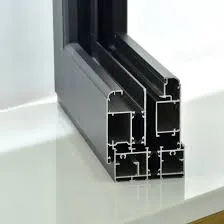ornamental cast iron parts
The Allure of Ornamental Cast Iron Parts
Ornamental cast iron parts have long captivated designers, architects, and craftsmen alike. These intricate pieces blend functionality with artistry, making them a popular choice for various applications, from architecture to furniture design. Cast iron, an alloy of iron that contains a high carbon content, is known for its durability and strength. When molded into decorative shapes, it becomes a medium for artistic expression that can enhance both historical and modern designs.
A Rich History
The use of cast iron dates back to ancient times, but it became widely favored during the Industrial Revolution. This period marked a significant turning point for craftsmanship. With the advent of cast iron foundries, artisans began to produce elaborate designs that showcased both skill and creativity. Ornamental cast iron parts, from railings to garden furniture, emerged as popular architectural elements. They could be manufactured quickly, yet they retained a level of artistic detail that wood and stone could not achieve.
Victorian-era architecture prominently featured ornamental cast iron elements. Elaborate balustrades, decorative columns, and ornate gates adorned public buildings and private residences. These creations not only displayed wealth and status but also contributed to a sense of beauty in urban landscapes. Even today, as cities strive to preserve their historical character, ornamental cast iron continues to play a vital role in heritage restoration projects.
Versatile Applications
The versatility of ornamental cast iron parts extends far beyond architecture. They are commonly used in various applications, including
1. Garden Decor Cast iron garden furniture, including benches and tables, combines beauty and durability. The intricate designs often include floral motifs or geometric patterns, making them statement pieces in any outdoor setting.
2. Fencing and Railings Ornamental cast iron fences and railings provide security without sacrificing aesthetics. They can be designed to complement the architectural style of a home, creating an inviting entrance while ensuring safety.
ornamental cast iron parts

3. Industrial Style In recent years, the industrial design trend has embraced the raw elegance of cast iron. Its use in furniture, lighting, and home accessories brings a rustic yet chic appeal to modern spaces.
4. Art Installations Artists and sculptors have also turned to ornamental cast iron as a medium for creating unique pieces that draw attention and provoke thought. These installations not only beautify public spaces but also tell stories and evoke emotions.
Craftsmanship and Modern Techniques
The craftsmanship behind ornamental cast iron is a blend of traditional techniques and modern innovation. Skilled artisans still handcraft many pieces, ensuring a level of precision and artistry that is often lacking in mass-produced items. However, advancements in technology have also transformed the production process. Computer-aided design (CAD) allows for more intricate patterns and designs, making it possible to create customized pieces that meet specific requirements.
While traditional foundries have remained essential for producing high-quality cast iron parts, 3D printing technology is beginning to make an impact as well. This method allows for rapid prototyping and the creation of complex designs that may be more challenging to achieve through traditional casting methods. As technology continues to evolve, the future of ornamental cast iron parts looks promising, with new possibilities for design and application.
Maintenance and Care
One aspect to consider when working with ornamental cast iron is maintenance. While cast iron is durable, it is susceptible to rust if not properly cared for. Regular cleaning and applying a protective coating can help preserve its beauty. For outdoor pieces, choosing weather-resistant finishes can extend the lifespan and maintain their ornamental appeal through changing seasons.
Conclusion
Ornamental cast iron parts are a testament to the harmonious blend of functionality and artistry. Their rich history, versatility, and timeless appeal make them an enduring choice for many applications. As we continue to innovate and explore new design possibilities, ornamental cast iron will undoubtedly remain a cherished element in both historical restoration and contemporary design. Whether enhancing the streets of a bustling city or gracing a tranquil garden, these pieces of art are not merely structural components; they are legacy, beauty, and a connection to the craftsmanship of yesteryears.
-
Wrought Iron Components: Timeless Elegance and Structural StrengthNewsJul.28,2025
-
Window Hardware Essentials: Rollers, Handles, and Locking SolutionsNewsJul.28,2025
-
Small Agricultural Processing Machines: Corn Threshers, Cassava Chippers, Grain Peelers & Chaff CuttersNewsJul.28,2025
-
Sliding Rollers: Smooth, Silent, and Built to LastNewsJul.28,2025
-
Cast Iron Stoves: Timeless Heating with Modern EfficiencyNewsJul.28,2025
-
Cast Iron Pipe and Fitting: Durable, Fire-Resistant Solutions for Plumbing and DrainageNewsJul.28,2025
-
 Wrought Iron Components: Timeless Elegance and Structural StrengthJul-28-2025Wrought Iron Components: Timeless Elegance and Structural Strength
Wrought Iron Components: Timeless Elegance and Structural StrengthJul-28-2025Wrought Iron Components: Timeless Elegance and Structural Strength -
 Window Hardware Essentials: Rollers, Handles, and Locking SolutionsJul-28-2025Window Hardware Essentials: Rollers, Handles, and Locking Solutions
Window Hardware Essentials: Rollers, Handles, and Locking SolutionsJul-28-2025Window Hardware Essentials: Rollers, Handles, and Locking Solutions -
 Small Agricultural Processing Machines: Corn Threshers, Cassava Chippers, Grain Peelers & Chaff CuttersJul-28-2025Small Agricultural Processing Machines: Corn Threshers, Cassava Chippers, Grain Peelers & Chaff Cutters
Small Agricultural Processing Machines: Corn Threshers, Cassava Chippers, Grain Peelers & Chaff CuttersJul-28-2025Small Agricultural Processing Machines: Corn Threshers, Cassava Chippers, Grain Peelers & Chaff Cutters












